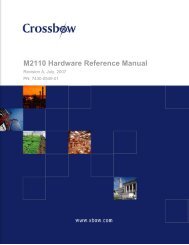

Symptom cluster composition can differ by age, sex, performance status, and cancer diagnosis. Therefore, a more profound understanding of symptom clusters and how they affect cancer survivors is necessary.Ī symptom cluster has been defined as a stable group of two or more concurrent symptoms that are related and distinct from other symptom clusters. Consequently, treating one symptom may not necessarily improve HRQoL or prognosis. Treating one symptom of the cluster could influence the others, as the direct treatment of one symptom may indirectly have an impact on another symptom in the cluster. These symptom clusters can be of therapeutic importance. However, symptom management studies have traditionally focussed only on single symptoms, although research indicates that multiple symptoms often coexist and could form symptom clusters. Numerous studies have already shown that symptoms or the experienced symptom burden impact cancer survivors’ health-related quality of life (HRQoL) and clinical outcomes.

#Survival stata 12 manual Pc
Improving classification of PC survivors according to severity of multiple symptoms could assist in developing interventions tailored to survivors’ needs.Ĭancer survivors often suffer from multiple symptoms, depending on their cancer and therapy. Three distinct classes of the pain, fatigue, and depression cluster were identified, which are associated with treatment, comorbidities, lifestyle factors, and HRQoL outcomes. Survivors in classes 2 and 3 were more likely to be physically inactive, report a history of depression or some other specific comorbidity, be treated with radiation therapy, and have worse HRQoL outcomes compared to class 1. Three classes were identified: class 1 (61.4%) – “low pain, low physical and emotional fatigue, moderate depressive symptoms” class 2 (15.1%) – “low physical fatigue and pain, moderate emotional fatigue, high depressive symptoms” class 3 (23.5%) – high scores for all symptoms. Factors associated with the derived classes were determined using multinomial logistic regression analysis. Latent class analysis was used to derive cluster classes. Fatigue was assessed with the EORTC QLQ-FA12, depressive symptoms with the MHI-5, and pain with the EORTC QLQ-C30 questionnaire.

Six hundred fifty-three stage T1-T3N0M0 survivors were identified from the Prostate Cancer Survivorship in Switzerland (PROCAS) study. In this study, we aimed to investigate classes of this symptom cluster in long-term PC survivors, to classify PC survivors accordingly, and to explore associations between classes of this cluster and health-related quality of life (HRQoL). These concurrent symptoms can form a cluster. Aside from urological and sexual problems, long-term (≥5 years after initial diagnosis) prostate cancer (PC) survivors might suffer from pain, fatigue, and depression.


 0 kommentar(er)
0 kommentar(er)
